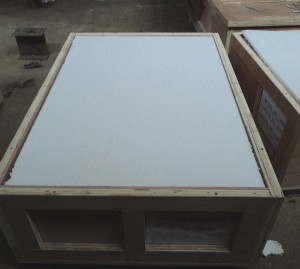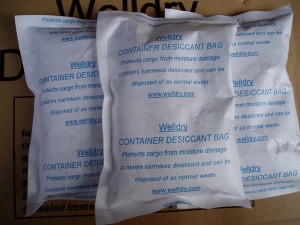Nowadays, more and more sculptors and public artists need to ship their works to place far away for exhibition or foundry for metal casting. It is important to take actions to make sure the sculptures arrive at destination safely. Here are some tips we employ.
– For small sized work, a strong corrugated carton or solid crafted wood crating is very helpful to protect the sculpture inside. However, wood without fumigation may not be allowed to enter into another country especially Europe, North America and Australia. Therefore, make sure the wood is fumigated or only use plywood, which is a multiple layer structured man made wood. Select the thickness of the wood carefully according to the weight of your sculpture. To make unpacking process easier for the recipient, use stainless steel bolts and nuts instead of nails to fix the cover of crating. Corrugated carton is more suitable for smaller sized work and it works quite well on protection. The more layer corrugated paper, the strong it is.
– Outer packing is only the basic protection for sculpture from outside damage to the sculpture. There is strong vibration during delivery, especially shipping by sea. To avoid damage of vibration, make sure to stuff crating or cartoon inside with soft material. Bubble paper, foam and polystyrene are most commonly used. From our experience, polystyrene should be considered as one of the best stuffing material. It can be full all the empty space inside the crafting and absorb the energy of vibration effectively.
Here are a case we pack a stainless steel sculpture with polished finish. Since the surface has to be protected carefully, we wrap the stainless steel pieces with very thick bubble paper and stuff the strong plywood crating with foam blocks.
– Water drops may generate on the surface of sculpture during sea shipping duo to the severe temperature change, which could do harm to the metal. A good solution to this issue is to wrap a plastic paper or rubble paper around sculpture. Another good solution is place some drying agent in container or crating. The common drying agent is Calcium Chloride, which is cheap yet effective on absorbing water. Place the drying agent properly in crate or container, especially around the wall of container., where water gather.
– For shipping large scale sculpture, we section the metal sculpture into several pieces. The way how it is sectioned is depending on the shape of the work. You have to make sure it can be placed into a standard container for sea shipping. Often, we will fabricate a very solid steel frame and pack the sculpture into the frame and tie them together with wire firmly.
In you have any question on how to pack and ship your sculpture safely, feel free to drop us an Email.





Interesting comments on packing sculpture – always a vital component of selling something!
May I add a couple of comments:
Always take a photo of each ‘layer’ as you pack – this is particularly useful if you are packing for a traveling exhibition, and someone else will be doing the re-packing on the next leg. Tape the photos to the inside of the packing case lid. Also add a photo of the sculpture itself to hopefully satisfy curious custom officials!
Rather than just “stuffing” bubble of similar into the spaces in a crate – which can scratch a delicate or polished patina, I have found designing a series of padded rods fixed to blocks screwed onto the sides, and blocks screwed to the base to stop any movement within the crate very effective. Totally agree – you can’t take too much care with packing!